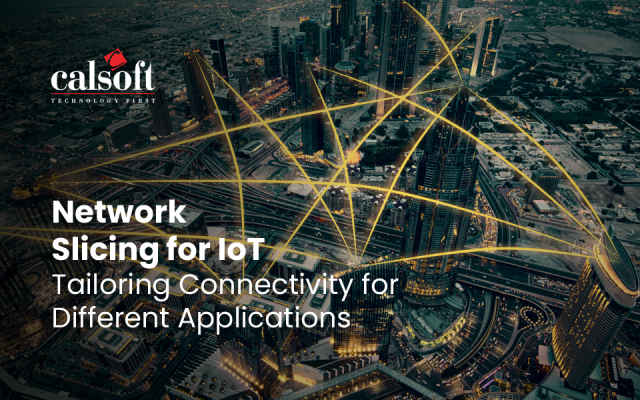The number of connected devices is expected to grow to $50 billion by 2020. And the global spending on IoT devices and services is expected to grow to $1.7 trillion in 2020. But even as our homes, cars, and wearable devices get smarter, IoT is set to find a prominent place in the enterprise as well.
Sectors such as healthcare, transport, and energy are all leaning in towards this technology. However, along with the devices that enable IoT, we also need to pay close attention to the network. Given the volume of data and the amount of real-time instructions flowing up and down, it becomes critical to ensure that the network is positioned to support these devices and help them function as desired. The connectivity, power, compute, manageability, and security of IoT deployments are all dependent on the network, making it a crucial cog in the IoT wheel.
Data and data analytics
IoT is nothing without a network to support it. The sensor influx will generate vast amounts of data that need to be processed in real time to glean insights that deliver value. This influx of data will have a huge impact on the capabilities of the networking systems that we employ today.
The inability of the network to keep up will impede the data processing and analytics capabilities. The scale of the challenge suggests that the existing network ecosystem will have trouble keeping up with the demands of IoT in the coming years.
Security
Another aspect of IoT that we need to consider is security. The IoT ecosystem demands the integration of operational technology (OT) and information technology (IT) amongst the other usual suspects such as manufacturing systems and more. These integrations, along with enabling IoT, open doors to potential threats from hackers.
These threats can be mitigated greatly by ensuring that security is a “baked-in” feature of the network too. And of course, the network needs to evolve to secure and protect the application servers from attacks that originate from infected IoT devices.
Connectivity concerns
IoT is a network of devices that can communicate with one another. For this, IoT devices need committed connectivity to controllers that manage the device ecosystem. Sure, the connectivity can be wired or wireless. We currently have several protocol options such as NFC, Wi-Fi, cellular, z-wave, to choose from. The network infrastructure has to be such that it can support the protocols that make the most sense in a specific IoT landscape.
Compute
IoT deployments need to process events without latency to deliver impact in real time. IoT devices are optimized for form-factor, power, and cost, limiting the compute power available in these devices. This challenge can be mitigated by leveraging a network that can support an application hosting environment and allow IoT vendors to host their software locally. The capacity of the network also decides how the compute on the network elements can be leveraged to run processes such as dynamically increasing and managing traffic.
With IoT increasingly becoming a mainstream technology, enterprises have to look at managing a large number of IoT devices at scale. This is proving to be a major challenge. While IoT solutions are able to manage their devices, a robust network can enable this software stack to reside in the part of the infrastructure where computing power exists. This helps in delivering critical messages from the controller to the devices with high reliability; assists in automated provisioning of the network for supporting IoT; and also helps manage IoT devices at scale.
Given the unique needs of the IoT ecosystem, it is clear that we need dedicated and specific networks designed for IoT itself. Intent-based networking and Service Mesh are emerging as network options to enable IoT to its fullest potential.
Service Mesh, for example, is a dedicated infrastructure that has a dedicated infrastructure layer built right into an app. It has been defined as a configurable, low‑latency infrastructure layer that can handle a high volume of network‑based interprocess communication among application infrastructure services using APIs. It ensures fast, reliable, and secure communication among containerized and, often, temporary application infrastructure services. Service discovery, observability, authentication, traceability, load balancing, authorization, support for the circuit breaker pattern, and encryption are some of the capabilities of this network.
Intent-based networking is another solution that takes into consideration the networking demands needed to make IoT a success. Intent-based networks change the way networks are managed and depend on the administrators to tell the network what needs to be done. If this means dedicating the network’s capability to IoT, then that option exists. The network determines ‘how’ it is to be done and then automates specific tasks to make it happen.
Experts will say that intent-based networking systems (IBNS) are not new. However, now we have technologies such as Machine Learning and advanced automation to control these networks better. Intent-based networking is a departure from how networks are managed today – manual with absent algorithmic validation. Intent-based networking monitors, identifies, and reacts in real time to meet the needs of the changing network conditions and ensures that the desired state of the network is always maintained.
In this context, it is also worth evaluating 5G. 5G is more than just fast downloads. It is about high-speed connectivity, extremely low latency, and pervasive coverage. As 5G becomes available, we can see it meeting some of the demands of IoT and real-time network performance. There’s a real promise that 5G could become pivotal in driving IoT adoption.
It is interesting to see how the world of networking is evolving to support the demands of technologies such as IoT. We will eventually see many more capabilities being added to network solutions to drive the IoT wave. It’s clear that networking games are only the beginning.
Looking for optimal networking solutions for your business?






